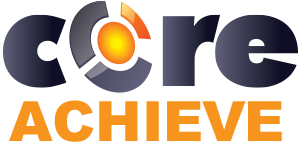How to Re-humanize Your eLearning
February, 07 2023
Other posts:
Enhancing Team Dynamics for Effective Group Decision-Making with LMS Integration
Organizations increasingly rely on collaborative efforts to solve complex problems, innovate, and adapt to change, but how do we ensure that collaboration is happening.
Maximizing Small Business Potential with Training Technology
Training technologies can push small businesses ahead of their competitors, but what are the factors that go into choosing the right technology?
Unlocking Employee Potential: The Transformative Benefits of an Interactive Learning Management System (LMS)
Interactive training allows for unlocking employee potential, but how is it done?
Building a Robust Sales Pipeline with Training
Every organization wants a streamlined sales pipeline, but building one requires a series of interlocking activities with one of the most important being training.
Strategies for Adapting In-Person Training to Online Platforms
Online training is one of the most flexible ways of delivering training across organizations, but how do you even begin to adapt in-person training into online?
Remember when one instructor had a massive impact on you? These stories never seem to happen with remote training, why?
We’ve talked quite a bit about the importance of having a human element in your eLearning training. Whether it be through narration or instructor led sessions, the through line is that by adding that human element your training’s effectiveness will be increased, but why is that?
Before we cover that question, let’s explain what is meant by a human element. Simply, a human element in eLearning is some type of personality add to the training to make it feel more personable. Often, eLearning can feel a little soulless and the human element remedies this.
Now for the question. Humans are inherently social creatures, and, because of that, we tend to learn best from other people. This reasoning is why courses that include narration or instructor led session perform much better than those that don’t. The connection with the people strengths the connection with the courses content. Below is a list of things you can do to make your training more efficient by making it more humanized.
Narration
This one (and the next one) is a gimmie, but if you haven’t seen those posts here’s a summary: hearing someone say while reading it makes it more likely to stick in our mind. The effect is furthered if the tone of the narration is conversational rather than professional.
Instructor Led Training
Instructor led training (ILT) is simple enough to understand have the instructor led a session or two often during a follow asynchronous course. ILTs can be done either remote or in-person, but either way, it allows the learner to understand their instructor, their peers, and opens the opportunity for dialog.
Utilize Discussions
Humanization of training doesn’t just have to be from the instructor, connecting learners with their peers can be equally effective. A simple way to achieve this is to periodically assign some discussions throughout courses. It can be easy to go overboard, however, and make your learners feel like discussions are just a way to fill time or just another assignment.
Don’t be too Stuffy
So many fields are dominated by the “professional above all” moto that leads to a dehumanization of a company or group of people. This is beginning to change with companies attempting to show more personality and training should start doing this to. Show that there are real people behind the training by letting their personalities influence it and learners will be more willing to reciprocate—allowing them to be more engaged.
Add Movement
No, don’t add prepackaged slide transitions, but add movement in a more creative way. Animations are a great way to add expression and personal to something typically devoid of that opportunity. Utilizing animations in your course can add to the experience of taking it while making the course come to life.
Mix Up Interactions
Think about how your learners are interacting with the course. It could be as simple as they only respond with multiple choice questions or as large as the environment they typically take the course in. Then, think about how you can change up these interactions to help create a more active training.
Make Room for Things Beyond Learning
Not only is marathoning learning inefficient, but it also makes the learner feel like a drone. Breaking up the monotony by allowing learners to interact with their peers in a non-course environment provides often needed rest. Yet, even if they cannot do this, you should still facilitate and promote breaks from the learning as both still are acknowledgements of the learner’s boredom or desires.
At the end of it all, training should not be abstracted from the personal elements of our daily lives. By integrating more personality into learning, we can make it more effective and memorable—a win-win for everyone involved.
Get started with CoreAchieve today for free.
Photo by John Schnobrich on Unsplash

Leave comment: